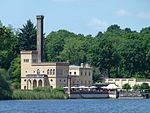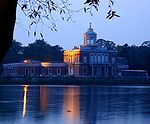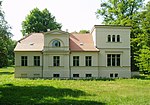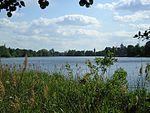Cecilienhof

Cecilienhof Palace (German: Schloss Cecilienhof) is a palace in Potsdam, Brandenburg, Germany, built from 1914 to 1917 in the layout of an English Tudor manor house. Cecilienhof was the last palace built by the House of Hohenzollern that ruled the Kingdom of Prussia and the German Empire until the end of World War I. It is famous for having been the location of the Potsdam Conference in 1945, in which the leaders of the Soviet Union, the United Kingdom and the United States made important decisions affecting the shape of post World War II Europe and Asia. Cecilienhof has been part of the Palaces and Parks of Potsdam and Berlin UNESCO World Heritage Site since 1990.
Excerpt from the Wikipedia article Cecilienhof (License: CC BY-SA 3.0, Authors, Images).Cecilienhof
Im Neuen Garten, Potsdam Nauener Vorstadt
Geographical coordinates (GPS) Address Website External links Nearby Places Show on map
Geographical coordinates (GPS)
| Latitude | Longitude |
|---|---|
| N 52.419166666667 ° | E 13.070833333333 ° |
Address
Schloss Cecilienhof
Im Neuen Garten 11
14469 Potsdam, Nauener Vorstadt
Brandenburg, Germany
Open on Google Maps









